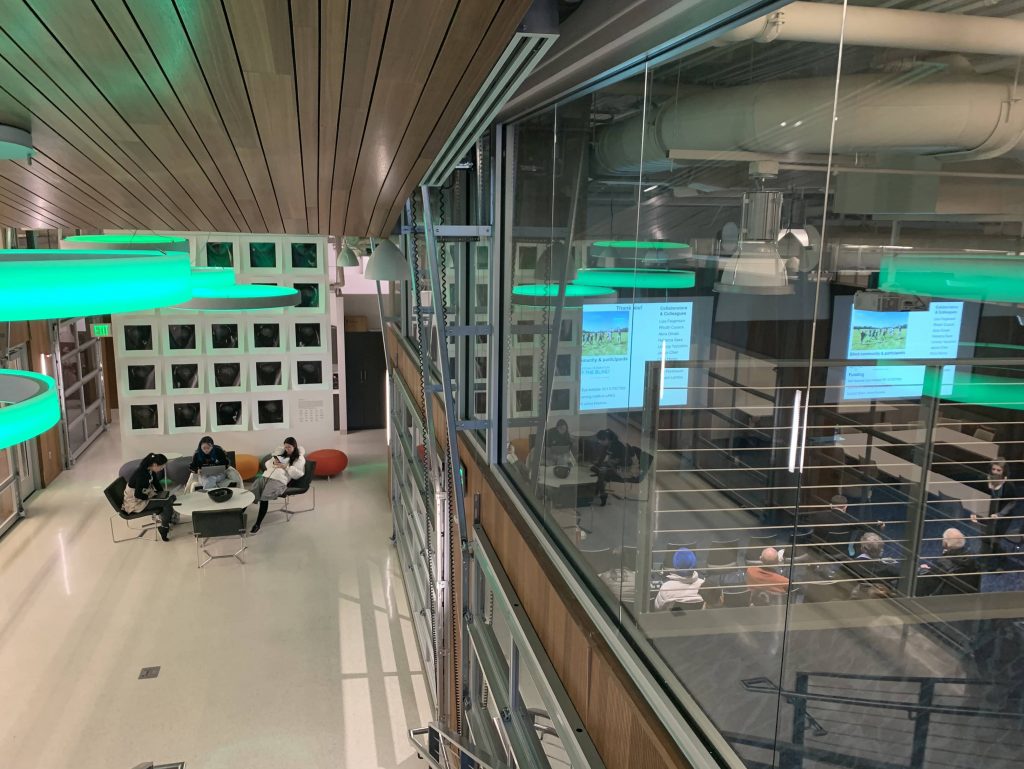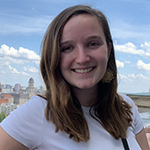Vision provides a rich source of information that most people’s lives revolve around. Yet, for blind people, how do they conceive of visual intake and what happens to regions of the brain dedicated to vision if a person doesn’t have typical visual input? These are questions that drive Marina Bedny PhD, an Assistant Professor of Psychological and Brain Sciences and principal investigator of a neuroplasticity and development lab at John Hopkins University.

Bedny spoke at Duke’s Institute for Brain Sciences on Friday, January 17th, about her work with congenitally blind adults. Her lab explores similarities and distinctions of visual perceptions between blind and seeing people and seeks to understand how nuanced, natural variation in experience shapes the human mind and brain.
Many of the studies Bedny discussed have very important linguistic components. In one trial, she investigated the meaning of verbs pertaining to light events and visual perception as compared to touch, amodal, auditory, and motion verbs.
Both blind and sighted people displayed nearly identical results when comparing the different types of verbs used in the study. This showed that there were no differences in what blind people knew about the terms. Analysis of the verbs revealed that linguistic dimensions of intensity and instability were used to evaluate the words’ comparative meanings. Blind people agreed more on the comparison of sound emission and touch perception words. This shows that blind participants have more aligned comprehension of the meanings of other sensory terms compared to sighted people.

In other cases, Bedny’s lab assessed what blind individuals know about color. One study used three object types – natural kinds, functional artifacts, and non-functional artifacts. These categories were used to evaluate agreeance not only on color, but the relevancy of color to certain objects’ functions as well.

Another crucial question of Bedny’s work looks at how the innate structure of the brain constrains cortical function. The findings show that the visual system in blind participants has been repurposed for higher cognitive functions and that portions of the visual system connected to high cognitive abilities are invaded by the visual systems. Along with repurposing visual regions for linguistic use, Bedny’s lab found that visual regions of the brain are active during numerical processing tasks too.
Blind people display additional activity in the visual centers of their brain in numerous studies beyond having the same regional brain responsiveness as sighted people. Though further research is necessary, Bedny proposes that there is a sensitive period during development that is critical to the specialization of the brain. Study participants who have adult-onset blindness do not show the same sensitivity and patterned responses in visual cortices repurposed for different functions as congenitally blind subjects.

At birth, the human cortex is pluripotent – providing the best of both worlds, Bedny said. The brain is prepared but highly flexible. Her studies have repeatedly shown that the brain is built for and transformed by language, and they underscore the importance of nature and nurture in human development.

Post by Cydney Livingston
